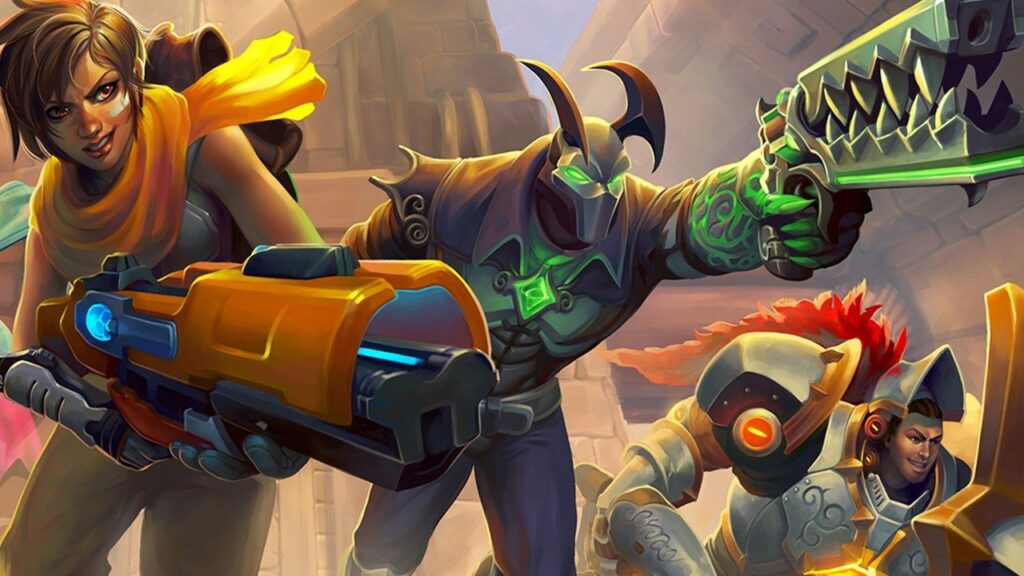Who is the most powerful champion in Paladins?
Paladins, the fast-paced, team-based shooter game, offers players a diverse array of champions, each with unique abilities and playstyles. As players delve into the game, a common question arises: who is the most powerful champion? In this article, we’ll explore the dynamics of power in Paladins, analyze contenders for the top spot, and consider factors like player preferences and community opinions.
Understanding Power in Paladins
In the realm of Paladins, power extends beyond mere strength. It encompasses a champion’s abilities, versatility, and overall impact on the battlefield. A powerful champion can turn the tide of a match with strategic plays and effective use of their unique skills.
Top Contenders for the Most Powerful Champion
Several champions stand out for their prowess on the battlefield. Champions like Drogoz, Androxus, and Seris have earned a reputation for their exceptional abilities. Let’s delve into the distinct strengths that make these champions formidable.
In-Depth Analysis of Champion Abilities
Drogoz’s Fire Spit: Unleashing Explosive Fury
Drogoz, the fiery dragon, dominates the skies with his Fire Spit ability. This explosive projectile not only deals significant damage but also has the potential for devastating area-of-effect attacks, making Drogoz a force to be reckoned with in open spaces.
Androxus and the Reversal of Fate
Androxus, the Godslayer, boasts the Reversal ability, allowing him to absorb incoming projectiles and reflect them back at his enemies. This defensive maneuver, when timed correctly, turns the tables in battles, showcasing Androxus’s skillful and versatile playstyle.
Seris’s Void Abides: A Healing Touch
Seris, the Void Abides, stands out as a potent support champion. With her Void Abides ability, she can heal allies over a large area, turning the tide of team fights. Her healing prowess cements her place as a powerful force on the side of her teammates.
Player Preferences and Playstyles
The question of the most powerful champion becomes subjective when considering player preferences and individual playstyles. While some may favor the direct damage output of champions like Viktor, others might appreciate the strategic impact of support champions like Ying. The versatility of Paladins lies in catering to a variety of playstyles.
Community Opinions and Rankings
The Paladins community plays a crucial role in determining the perceived power of champions. Through forums, social media, and in-game discussions, players share their experiences and opinions. Rankings often emerge based on community feedback, shedding light on which champions are currently considered the strongest.
Balance Changes and Patch Updates
Paladins remains a dynamic game with frequent balance changes and patch updates. What may be a powerhouse champion in one patch might undergo significant alterations in the next. Players need to adapt to the evolving meta and explore new strategies as the game continues to evolve.
The Ever-Changing Landscape
Paladins, at its core, thrives on constant evolution, keeping players engaged through regular balance changes and patch updates. This dynamic nature ensures that the status quo of powerhouse champions is never stagnant. A champion dominating in one patch may find itself undergoing substantial alterations in the next, reshaping the game’s landscape.
Balancing Act: Maintaining Fairness and Diversity
Developers meticulously craft balance changes to foster fairness and diversity within the game. The goal is to prevent any single champion from monopolizing the battlefield, promoting a varied and strategic gameplay experience. These changes often target specific abilities, damage outputs, or healing capacities, influencing how champions interact within the game.
Strategies in Flux: Adapting to the Meta
The term “meta” in Paladins refers to the prevailing strategies, champion selections, and playstyles that define the current state of the game. With each patch, the meta can experience seismic shifts, altering the effectiveness of certain champions and strategies. Successful players stay ahead by keenly adapting to these changes, redefining their approach to match the evolving landscape.
Impact on Player Experience
The consequences of balance changes and patch updates extend beyond the technical aspects. They directly impact the player experience, injecting freshness into the game and challenging players to embrace new tactics. The excitement lies in discovering how altered champion dynamics and modified game mechanics unfold in each patch.
Strategic Innovation: Exploring New Avenues
As Paladins evolves, players are encouraged to explore uncharted territories, devising innovative strategies that capitalize on the latest changes. What worked in the previous patch may not guarantee success in the current one, pushing players to experiment with different champion compositions and tactics to find the winning formula.
Community Feedback: A Vital Loop
The relationship between developers and the player base is crucial. Developers often consider community feedback to fine-tune balance changes further. Player insights provide valuable perspectives on the impact of patches, fostering a collaborative environment where the game evolves not just through the developers’ vision but also through the experiences and observations of its dedicated player community.
Competitive Dynamics: A Shifting Landscape
In the realm of competitive play, the influence of balance changes is magnified. Professional players must not only adapt swiftly but also anticipate the evolving meta to stay competitive. Tournaments and esports events often showcase the dynamic nature of Paladins as teams adjust their strategies based on the latest patch notes.
Conclusion: Embracing the Flux
In conclusion, the dynamism of Paladins, propelled by frequent balance changes and patch updates, is a defining characteristic of the game. Players who thrive in this ever-changing environment, adapting their strategies and embracing innovation, find success on the battlefield. The continuous evolution ensures that Paladins remains a vibrant and engaging experience for players who relish the challenge of mastering the game’s shifting dynamics.
Conclusion
In the ever-changing landscape of Paladins, determining the most powerful champion is a complex task. The strength of a champion depends on factors such as individual skill, team composition, and the current state of the game. Ultimately, the most powerful champion is subjective and varies based on player perspectives and experiences.



